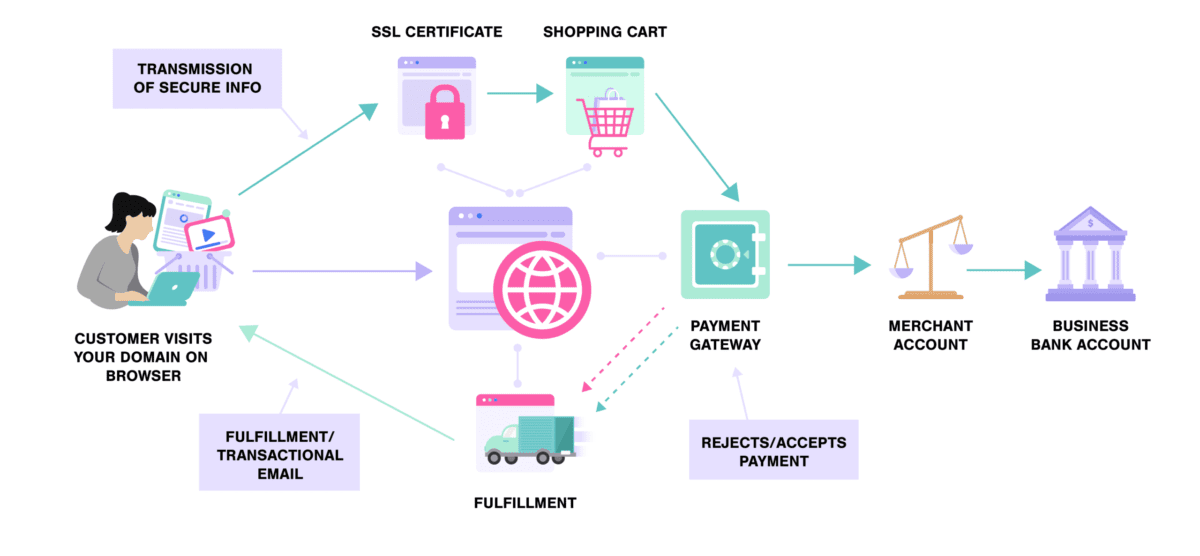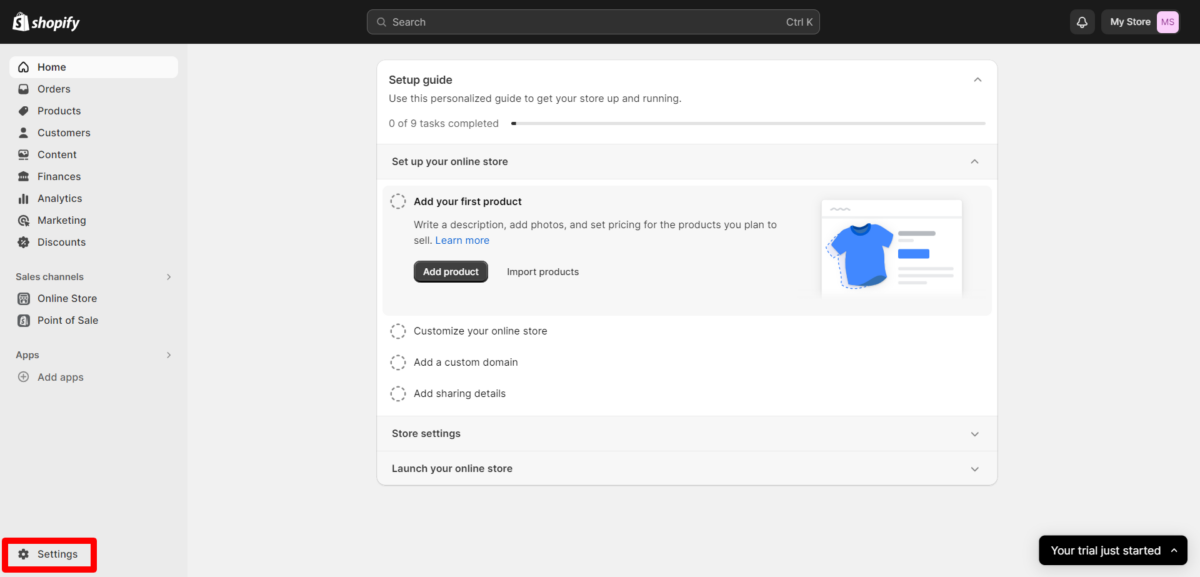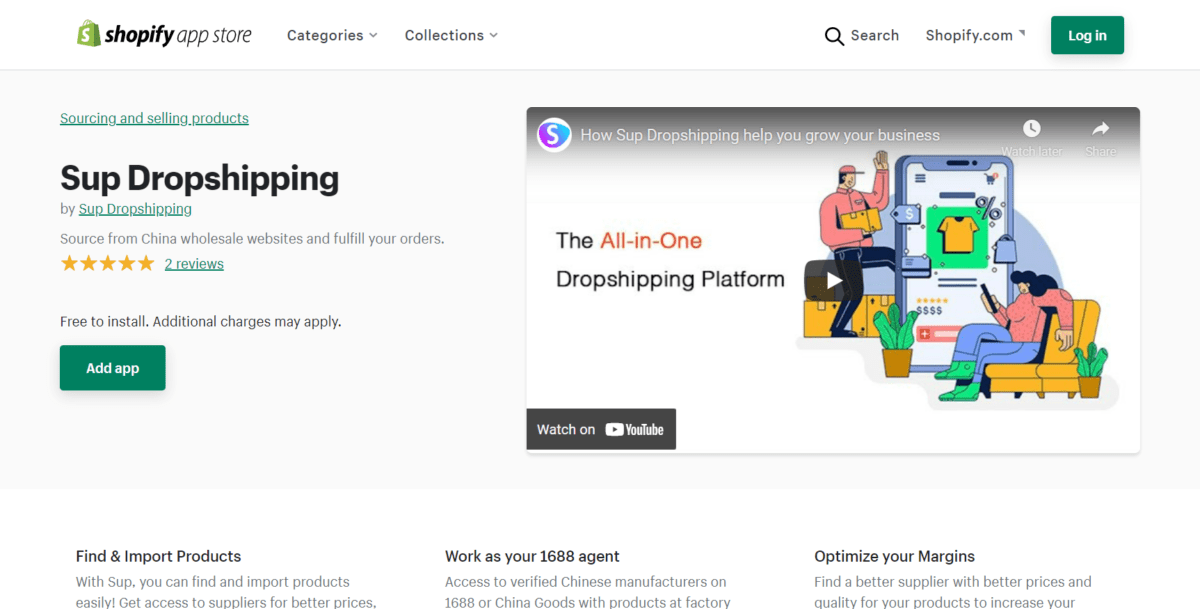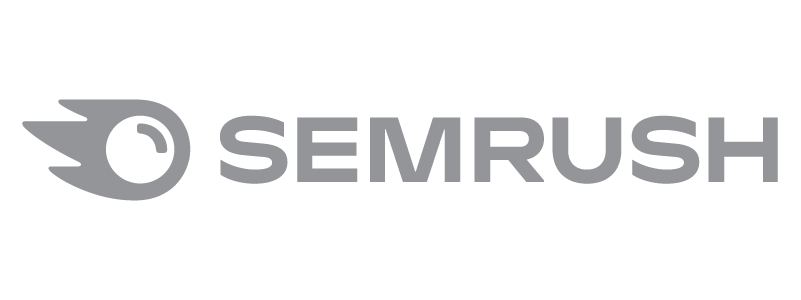Are you asking yourself: What is Shopify? How does it work? Is it for real? If you want to start selling on Shopify or are wondering if buying from a Shopify site is safe, keep reading.
What is Shopify?
Shopify is a powerful, easy to use online platform designed to make ecommerce simple. It lets anyone sell products or services at a reasonable price. The platform covers everything Shopify sellers need, from getting a domain name to setting up an ecommerce website. They even go beyond online selling to enable in-person product and service sales.

Setting up your own website might seem intimidating if you’ve never done it, and Shopify aims to help with this. Shopify can pave your way to building a store for free, without a lot of technical skills. Shopify POS provides traction to break through into in-person markets as well. Shopify has options for every kind of merchant.

How Does Shopify Ecommerce Work?
The Shopify platform has been a perfect kick-start option for hopeful ecommerce business for over a decade. It started when the founder wanted to sell snowboards online but couldn’t find a good, easy-to-use ecommerce platform. The result was Shopify, an ecommerce solution for opening an online storefront with little to no technical knowledge.
You can sell an incredible range of things on Shopify, both physical and digital. That makes Shopify a solid choice for an ecommerce entrepreneur. Most Shopify users don’t have a ton of technical knowledge about how to set up an e-commerce website, and that’s okay.
Shopify is one of the original ecommerce platforms. It has evolved into an industry leader in e-commerce. It was built to make it easier for merchants to sell online, and it keeps evolving.

- A customer visits your ecommerce website and makes a selection. Any page or collection of pages that you fill with content and drive traffic to can be your ecommerce website.
- Your customer’s order goes into a shopping cart, from which they can enter payment.
- Secure information goes through an SSL certificate. This encrypts data so that your visitors can send personal information and payment information safely. Shopify provides the SSL certificate for you.
- Your customer’s data goes through a payment gateway. It sends credit card information securely and purchases the item. Shopify offers their own payment gateway, or you can use a third party payment provider.
- A transnational email is sent to your customer confirming the order and sending a receipt of purchase. This is done automatically through your shopping cart software.
- The order is completed. Next, you can manually ship and fulfill the order, or you can use a fulfillment center. The fulfillment center can automatically ship your inventory by integrating with your shopping cart. Shopify offers extensive support for fulfillment centers. They have their own, or a third party fulfillment, like Amazon.
- The money from your sales on Shopify goes to the merchant account.
- The money goes to your business bank account.
What is Shopify Used For?
Using Shopify isn’t hard. A free trial gives you the chance to try it out before you level up. A paid subscription gives you a well-equipped Shopify store for only about $39 per month after your free trial ends. If you’re ready to get started, here are the details about how to set up a Shopify site.
If you’re not ready to commit to a full plan, you can sign up for the Shopify Starter plan (aka Lite). An advantage of Shopify Lite is that it makes it easy to sell products from an existing website.
You can use Shopify for the following:
Sell Physical Things Online
Shopify is best known as a platform for online sales of physical products. They’ve been offering a genuine online presence to tiny companies selling specific products for a long time. Shopify is exceptionally powerful for dropshipping.
No matter what you’re selling, Shopify can get you set up with a gorgeous store that will make customers forget they’re online. With multiple payment processing options and an inventory of unlimited products, your Shopify store can be more appealing than a crowded department store.
Utilize MultiChannel Sales Support
Want a brick and mortar store or a presence at pop up events as well? If your dreams go beyond an ecommerce store, Shopify offers good support. Shopify POS is automatically offered when you get your ecommerce platform set up. It lets you take full or partial payments, credit and debit cards, and sell gift cards.
Even if you’re mostly online, ignoring in-person sales is a blown opportunity. You won’t know how many new customers you could make in real time with a popup event until you try. Store owners can easily offer discounts, scan barcodes, and customize receipts, all from a smartphone.
Shopify syncs your online store and your POS, so you’re in control of your inventory and finances at all times.
Expand Into Digital Sales
Increasingly, digital products offer some of the most profitable growth opportunities. If you want all the income with none of the anxiety-pumping overhead, digital sales might be for you. Forget about shipping rates and start making money from a Shopify business quickly.
Whether you have ebooks, audio, photo editing presets, or patterns, you can hustle online. Naturally, this kind of commerce is attractive to anyone who wants to make a massive income with slim overhead.
Offer Services and Memberships
Shopify can be a great platform for monetizing services. If you’re an artist, a yoga studio instructor, or a teacher, you can set up a site to bring in more clients. You can even sell tickets and memberships using Shopify.
Provide Rentals
Have things that people might want, but not willing to sell them? The Shopify platform offers options for renting machinery, clothing, props, costumers, or any other hodgepodge of goods that people don’t need permanently.
Whatever Else You’d Like
You can sell pretty much anything that you vibe with on Shopify. A resourceful online store can make an absolute success of itself selling things that other eCommerce websites haven’t thought of. Here are some more ideas to inspire you.
Getting Your Shopify Store Started
1. Sign Up
There’s no reason not to start with a free trial, so it’s very easy to get started on Shopify without much hard work. You’ll need a unique store name, so be ready to squeeze some creative ideas out, and don’t be too stuck if your first choice isn’t available. You’ll need to provide some basic information about yourself and then you’ll be asked what you want to sell.

With a basic Shopify plan, you can test out your business idea without spending much. It’s ok if you don’t know what you will put in your Shopify store yet. You can pick the “Playing around” and “I’m not sure” options. You can decide what to put in your Shopify store and change its name later.
Be sure to include the important information that customers will want to see, like your business email address, legal business name, location, and currency. Putting contact information well within reach legitimizes you to your customers.
Legal pages are also essential before you start selling. Be clear about your refund and return policies, customer privacy policy, shipping, and other terms of use.
2. Set Up Your Shopify Template
Once you’re signed up, you can make your site look the way you want it. Each Shopify theme has a comprehensive range of modifications, without getting in the weeds with coding.

You’ll be glad to know that you can change most aspects of your Shopify store by editing the HTML or CSS. If you can’t make the edits you need yourself, Shopify support may be able to help. Advanced customization is possible if you understand Liquid, Shopify’s programming language based on Ruby on Rails.
Most ecommerce businesses find a design they like within the premium themes available from Shopify and the additional compatible premium themes in template marketplaces. Only a few themes are available for free. Others come at an additional cost over the bottom line Shopify price. You can visit the Shopify Theme Store to see if there is one that meets your needs.
Don’t feel like you have to be absolutely sure about your theme. You can always change it later.
3. Add Your Content and Products
Whether you’re selling a physical product, a digital good, or a service, you’ll need to stock your store with options for your customers to choose from. Shopify allows you to provide a great deal of detail about your products. You’re in control of the copy, SEO in the content, and providing the kind of copy that will convince a customer that you’re no sleazy online shop.

You can also upload pictures of each product or images that represent your business services. They can be rearranged once they’re loaded, so you don’t have to worry about how you load them. Consistently is key when it comes to image sizes; otherwise, your store will look more like a photo gallery than a store.
Products or services can be grouped in collections to make it easier for your customers to find them. Because products can be in any number of collections, good categories make it more likely that more of the products your customers are looking for will be put in front of them. Products can be added manually to each collection or automatically included, depending on their features.
Products can be classified by:
- Color
- Type
- Seasonal
- Indoor or outdoor
- Any other classification that makes sense for your product and audience
How Does Shopify Work Once It’s Set Up?
Setting up your basic Shopify account and online store is just the beginning. Shopify is highly customizable with whatever kinds of products you’d like. It also gives you a lot of options on how to make your online store look and work. Here’s what you need to know about how to start selling whatever you’d like in a Shopify store that looks and works just how you want it to.
Shopify has thousands of add-ons to choose from, so if you find that you’re missing something out of the box, you are unlikely to struggle to find what you need in the Shopify app store. You may have to pay extra for the apps that you need to build the website you want, so it’s smart to look into all the apps that might be important to you before you commit to Shopify.
How to Use Shopify Payments
Shopify Pay is the most affordable payment gateway when you’re using Shopify. Without it, you’ll be paying nearly 3% on every transaction, which can get expensive fast. In fact, these fees can be a reality check when you start to move products. It may astonish you how easily those lurking fees can make a dent in your success.

Additional transaction fees are waived when you use Shopify Payments, so if you don’t mind their payment gateway, you won’t find fees to be a big deal. You can also get lower fees when you sign up for a more advanced Shopify plan, but you’ll still be spending around 2.4% per transaction for taking credit cards online or in person.
Be wary of potential pitfalls looming over Shopify Payments. You can’t use it for every kind of business. Don’t get played into signing up for Shopify, only to find that you’re stuck paying transaction fees on third party payment processors. Shopify payment processing isn’t available for businesses offering investment services, law firms for most transactions, crowdfunding campaigns, virtual currency, cannabis, and more.
Write a Blog
Think a blog is phony, soft science? Think again. A blog is a data-driven marketing technique to bump your SEO ranking through content marketing. Furthermore, a blog lends your business legitimacy, provided it’s packed with good content, and not fluff.
Shopify is not, first and foremost, a blogging platform. It shouldn’t come as a surprise that if you’re mostly getting online for blogging, you will likely be disappointed. However, if you want a good blog attached to your domain name to boost your SEO and validate your business, Shopify has what it takes.
If you want more from your Shopify blog, you can tap into a WordPress account and import your blog into Shopify. This way, your store platform gets all the features of blogging on WordPress.
Your blog can also generate income for your website, whether you run a blog directly through Spotify or integrate with WordPress. Embed a “Buy,” button, and advertise with images and descriptions of products right on your blog.
Set Up Shopify Shipping
One major advantage of Shopify is how easy they make it to outsource shipping. Shopify offers its own shipping with significant opportunities for discounts, depending on what plan you’re on and what shipping you use. They offer good rates from UPS, USPS, and more.
If you want more from shipping, Shopify also integrates with a number of apps. Look into shipping rates with various apps and Shopify to get a sense of what you’ll be paying to get products to your customers within your free trial.
Naturally, if your business doesn’t deal in physical products, you won’t need to worry about shipping for your online store. If you’re interested in dropshipping, look into third party apps. Shopify offers excellent support for dropshipping, so if this is an avenue that you’re looking into, Shopify is a solid way to go.
Dropshipping With Shopify
Excited about starting an ecommerce business from scratch, but worried about the cost of stocking products? Dropshipping might be the answer for you.
Dropshipping doesn’t come standard on any Shopify pricing level, but Shopify does support dropshipping extremely well using external apps. Dropshipping is a fantastic way to enable you to make fearless choices in stocking your store.
You don’t actually have to buy anything from a supplier to get started. Stock a vast array of products in your online store and order them online when a customer buys them. Some great dropshipping apps are Spocket, Printify, and Modalyst.

Keep Your Customers with Abandoned Cart Recovery
Building a great website, stocking your store, and attracting customers all goes to waste if you lose customers before the checkout process. Thankfully, Shopify gives you the features that you need to customize checkouts and keep customers.
Let customers check out without an account if you’d like to avoid losing customers who don’t want to sign up. Require sign-ups and offer lots of incentives to help you gain a long time customer, not just a sale in the moment.
Let customers choose whether to check out with a phone number or email address. If customers leave without paying, a cart abandonment email can automatically go out to prompt them to finish the purchase. Want to recover sales without having to collect emails? Booster Apps Abandoned Cart Recovery lets you do just that by prompting people about their abandoned cart before they leave your store.
Integrate With Other Sales Channels
Shopify lets you connect your website to huge sites like Amazon and eBay. Why compete to get onto the first page of Google results for your products when you can utilize the insane traffic present on these big sites? The more unique your products, the more likely you’ll end up first for search results from customers who want your product the most.
One thing you better realize, however, is that reviews of Shopify integration with some sites like these aren’t great. Many Shopify merchants say the Amazon integration seems to be that it isn’t much better than manually listing items on Amazon.
When it comes to Shopify eBay integration, users seem to be considerably more pleased. If you want to list your products on a big website like Amazon or eBay, do your research to ensure that integration is not just offered, but effective.
Tracking Finances with Shopify
Are you running a one-person business and handling your own bookkeeping with no trouble? If you have dreams of scaling up in the long-term game, you’ll need help automating finance management.
Keeping track of finances in real time is the only practical way to be sure that you’re not losing money. You can look at daily sales breakdowns, order histories, and reports from physical and online business. Auto-generated inventory reports keep you from overselling or overstocking.
If you want more from inventory management, look into Shopify apps like Stock Sync. You can customize your product classification with over 20 product fields. Sync with a number of vendor websites and automatically track your inventory across stores. You can also manage a number of drop shippers and suppliers from one platform.
Provide Superb Customer Support
No matter how great your product or store, poor customer service kills success. With a great customer support app, you’re in control of each customer experience. Apps like the HelpCenter, which comes with a free account, gives you a massive FAQ to answer common questions quickly without the customer having to reach out to you. An advanced Help Center makes it easy for customers to find more advanced answers.
Integrate with Social Media
Your customers spend a lot of time on social media, so selling and advertising there is important. With your social media accounts connected, you can boost sales without spending much. Shopify allows you to sell on Facebook, Instagram, Pinterest, and more. Put a “Buy,” button on each Facebook ad to boost sales and make social media followers into paying customers.
If your business is primarily run through social media, you can use Shopify lite to streamline payment processing. Its even cheaper than Shopify Basic and gives your buyers confidence their credit card information is secure.
Want more from your social media integration? An app like Brainity enables you to bring more traffic to your ecommerce store and turn more of that traffic into sales with targeted Facebook and Instagram marketing.
Track Analytics
Shopify features a good dashboard to give you practical, real-time updates on your traffic and sales, including:
- Total sales, including point of sale and online store income
- Average order value
- Returning customer rate over time and how it is trending
- Conversion rates
- Total orders and orders over time
However, most store owners are likely to want more features from their analytics. Shopify syncs seamlessly with Google Analytics ID. Google Analytics can tell you a lot about your customers, gathered from their HTTP requests, browser info, and cookies.
Developing Shopify Further
If you want more from Shopify, there are a lot of options available for the Shopify expert. Shopify API is highly customizable, enabling you to tweak or build new apps as needed. As a Shopify admin, you’ll find that you can transform your site without even needing coding. With some basic tested code, you can make a store that will meet the needs of practically any business.
Sell or Buy Your Online Store
Once you’ve built a gorgeous store, you may want to keep it forever, or you may be ready for the next project. Sell your site on the Shopify Exchange Marketplace for a lump sum that you can use to start your next project or put in your pocket.
Want to skip the work in establishing your ecommerce website? You can buy ready-made sites that already have a proven track record with valid, believable results in their industry.
Is Shopify Legit?
Have you ever looked through your bank records, seen a transaction that you didn’t recognize, and quickly jumped to the defiant conclusion that something shady was going on, only to realize that it was an online purchase that you really had made?
Unfortunately for Shopify, the phrase “powered by Shopify,” on a transaction too often prompts a snarky response that it is a mistake or a wrongful charge. Many customers don’t realize that the ecommerce store they have purchased from was a Shopify merchant.
Too often, they don’t actually realize who they gave their credit card information to. The ability for online store owners to remove a lot of Shopify branding separates them from Shopify, making it harder for customers to realize that Shopify is conducting the transaction.
That said, scammers do use Shopify, as they use pretty much any and all platforms and services. Users are sometimes upset at Shopify for allowing toxic purposes with their platform. However, Shopify, like any other platform, has limited power to stop it.
Shopify is a legitimate platform that powers thousands of successful businesses, both online and on the pavement.
The Better Business Bureau gives Shopify an A+, despite the less than stellar handful of customer reviews. Their excellent rating for Shopify is a representation of how they expect a business to interact with customers. They get that information from the business, from customers, and from public sources of data.
Give Shopify a Shot
Shopify has a number of advantages if you want to up your game with your online store or a physical presence. If you are a resourceful self-starter ready to learn a life lesson or two, ecommerce is a proven recipe for life-changing earnings. However, be ready to sweat as you struggle to rip off a piece of the ecommerce market for yourself.
Shopify is a good platform for the tech-adverse or those with some coding know-how. It can scale with you at a reasonable cost and gives you the power to pay for only the apps and plugins that you really need.
If Shopify is the first platform that you’ve considered in building your online store, it’s not a bad idea to consider all the best ecommerce platforms. Compare your options to be sure that you’re choosing the right platform for your needs. Some platforms may come with more of the features that you need without having to pay for additional apps.
Others may make it easier for you to build a quick online store that meets all your needs with no coding and few external apps. If you like the robust platform offered by Shopify and the capacity to customize your store fully to your needs with external apps, this might be the platform to amp up your online and in-person income.











